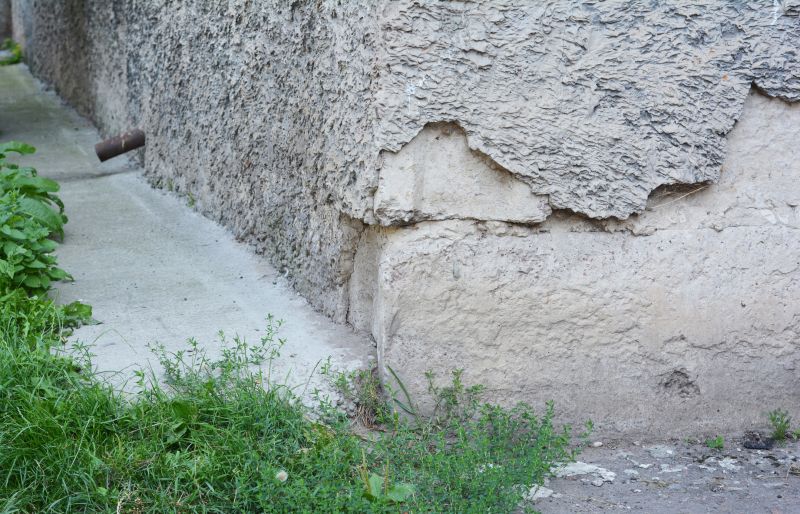Ultimate Guide To Foundation Repair Products For Home Improvement
Explore a comprehensive selection of foundation repair tools and materials to help you choose the right solutions for your needs.
 Foundation repairs are essential for maintaining the structural integrity and safety of a building. When issues such as cracks, uneven floors, or settling are observed, it is important to consider a variety of repair products designed to address these concerns effectively. These products range from structural supports to stabilization systems, each suited to different types of foundation problems and building conditions. Selecting the right products requires understanding the specific issue, the type of foundation, and the extent of the damage.
Foundation repairs are essential for maintaining the structural integrity and safety of a building. When issues such as cracks, uneven floors, or settling are observed, it is important to consider a variety of repair products designed to address these concerns effectively. These products range from structural supports to stabilization systems, each suited to different types of foundation problems and building conditions. Selecting the right products requires understanding the specific issue, the type of foundation, and the extent of the damage.
Top Overall Option
Hydraulic Pier System
A hydraulic pier system offers versatile support for various foundation types, providing adjustable stabilization that can accommodate settlement or shifting. It typically involves steel piers driven deep into stable soil and hydraulic jacks to lift and level the foundation. This system is valued for its adaptability and strength, making it suitable for a range of foundation repair needs. Proper installation by professionals ensures optimal performance and long-term stability.
Types of Products For Foundation Repairs
Epoxy Crack Fillers
Used to seal and stabilize small cracks in concrete surfaces, preventing water intrusion and further deterioration.
Carbon Fiber Reinforcements
Applied to reinforce and stabilize cracked or bowing basement walls without extensive excavation.
Underpinning Systems
Involves installing supports beneath the foundation to restore stability, often using piers or piles.
Helical Piers
Steel piers twisted into the ground to provide deep support for settling foundations.
Push Piers
Steel supports hydraulically driven beneath the foundation to lift and stabilize it.
Mudjacking and Slab Jacking
Injecting a grout mixture beneath concrete slabs to lift and level sunken areas.
Soil Stabilization Products
Materials designed to improve soil bearing capacity and reduce shifting.
Drainage Systems
Solutions to redirect water away from the foundation, reducing moisture-related issues.
Waterproofing Membranes
Applied to basement walls and floors to prevent water seepage and dampness.
Anchor Bolts and Plates
Used to secure framing and walls to the foundation, providing additional stability.
Polyurethane Foam Injections
Expanding foam used to fill voids and lift sunken slabs or areas.
Concrete Patching Compounds
Materials for repairing surface cracks and minor damages on concrete surfaces.
Foundation Wall Supports
Steel or wood supports used temporarily or permanently to hold walls in place.
Vapor Barriers
Installed to control moisture vapor transmission in crawl spaces and basements.
Drain Tiles
Drainage pipes installed around the foundation to manage groundwater flow.
Popular Choices
Commonly used for small cracks to restore structural integrity and prevent water ingress.
Frequently selected for their ability to lift and stabilize settling foundations.
Popular for basement wall stabilization without extensive excavation.
Often chosen for leveling sunken concrete slabs efficiently.
Widely used to improve water management around foundations.
Commonly applied to basement walls to reduce moisture issues.
A favored choice for deep foundation support and lifting.
Popular for quick, minimally invasive repairs of voids and slabs.
Used to temporarily or permanently reinforce walls in distress.
Selected for surface repairs and minor crack sealing.
Commonly installed in crawl spaces to control moisture levels.
Frequently used to secure and stabilize wall framing to the foundation.
Chosen for effective groundwater management around foundations.
Popular for improving soil conditions and preventing shifting.
In East Peoria, IL, where soil conditions and weather can influence foundation stability, choosing appropriate repair solutions is particularly important. Professional assessment can help determine the most suitable approach, whether that involves underpinning, pier systems, or crack injections. Proper installation and quality materials are key to ensuring long-term stability and safety.
Foundation repair products are designed to work with various foundation types, including concrete slabs, basements, and pier and beam systems. They can help lift, stabilize, and reinforce compromised structures. While some products are intended for DIY use, many require professional expertise to ensure proper application and effectiveness. Regular inspection and maintenance can help catch issues early and extend the lifespan of the repair work.
Understanding the range of available products and their specific functions can help homeowners and contractors make informed decisions. From epoxy crack fillers to hydraulic piers, each product plays a role in restoring a building’s foundation. When selecting products, consider compatibility with existing structures, ease of installation, and the longevity of the materials used.
Key Buying Considerations
- Assess the specific foundation issue to determine the appropriate product type.
- Consider the soil and environmental conditions of the location, such as moisture levels and soil stability.
- Evaluate whether the repair is intended as a temporary fix or a long-term solution.
- Check compatibility of the repair product with existing foundation materials.
- Determine the extent of damage to select the most effective repair approach.
- Review installation requirements—some products may require professional expertise.
- Consider the size and accessibility of the area needing repair for product application.
- Look for products with proven durability and resistance to environmental factors.
- Understand the impact of each product on future foundation inspections and maintenance.
- Factor in budget constraints while balancing the quality and longevity of the repair solution.
- Research product warranties and manufacturer support for added assurance.
- Ensure that the chosen products meet local building codes and standards.
- Think about the potential for future repairs and whether the product allows for easy adjustments.
- Evaluate the ease of application—DIY-friendly versus professional installation recommended.
- Consider the environmental conditions of East Peoria, IL, which may influence product performance.
